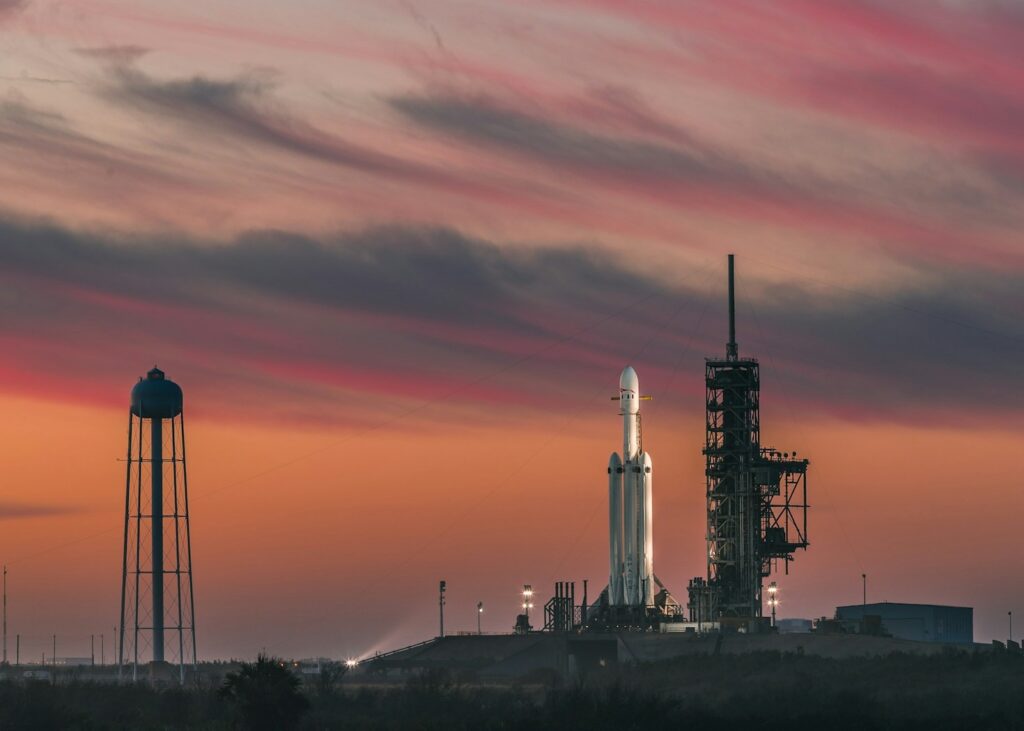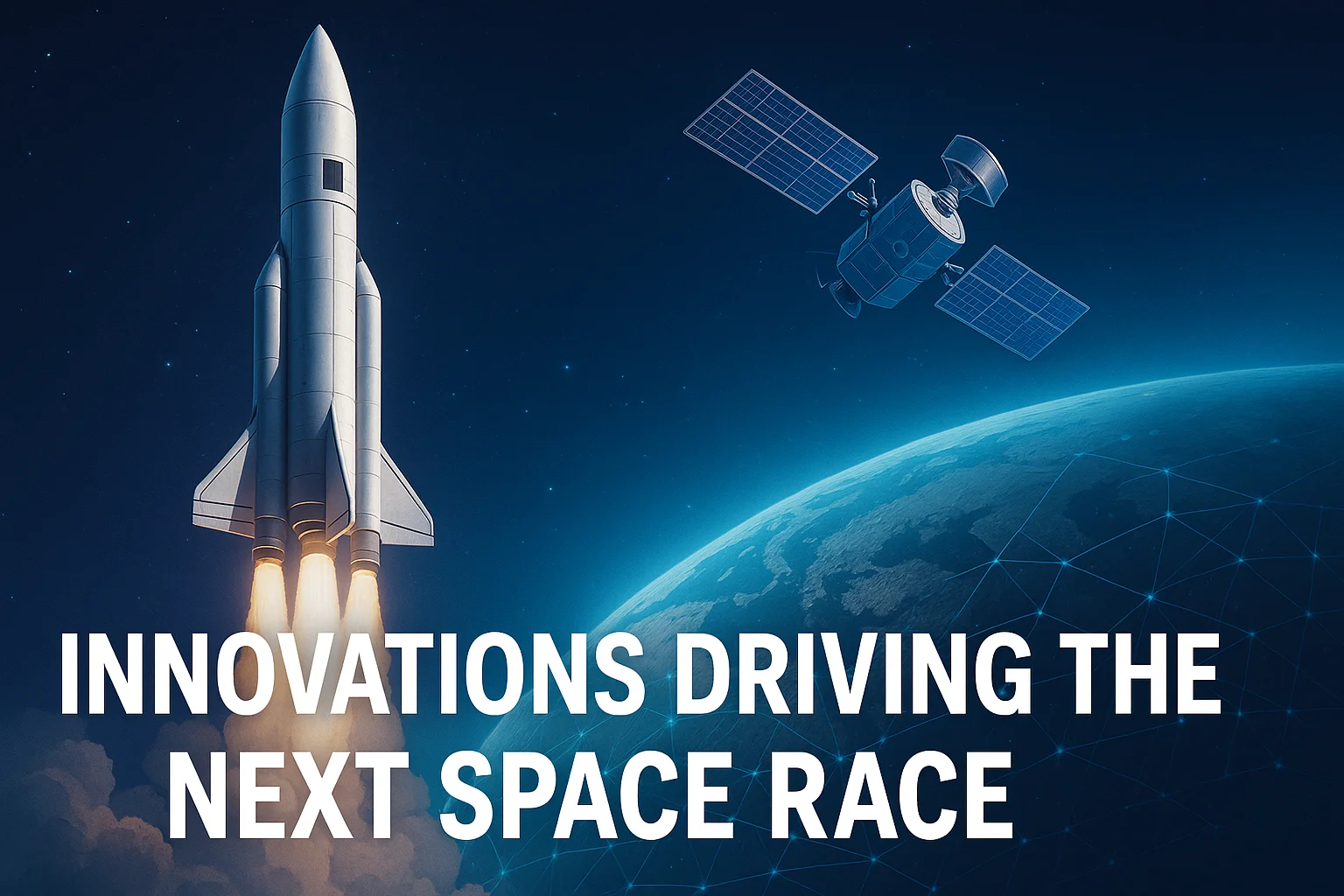What if the next space race isn’t about who gets to the Moon first — but who builds the most intelligent infrastructure around it?
We often think of space competition as a contest of launch dates and flag-planting. But the 21st-century version of this race is more nuanced — and arguably more consequential. This time, innovation is not a sideshow. It is the arena.
From AI-powered satellites to quantum-enhanced sensors, from private launch startups to geopolitical rivalries, the contours of space dominance are being redrawn. The question isn’t just who is going to space, but how, why, and with what tools.
Let’s break down the innovations that are not just driving this new race — but redefining its very rules.
The Broadview: What Defines the ‘Next’ Space Race?
The original space race was binary — the U.S. versus the USSR. It was about firsts: the first satellite, the first human, the first Moon landing.
Today, it’s multi-polar, multi-actor, and multi-dimensional. The arena now includes:
- Governments (NASA, CNSA, ISRO),
- Private companies (SpaceX, Blue Origin, Rocket Lab),
- Consortia and alliances (Artemis Accords, BRICS space initiatives),
- And even universities and startups.
What’s changed? The barrier to entry has dropped, thanks to reusable launch systems, small satellites, open-source data, and public-private partnerships. But more importantly, the new currency isn’t just altitude — it’s innovation.
Emerging Space Powers Are Shaping a Multipolar Space Economy
While the U.S. and China dominate headlines, other countries are quietly rewriting the narrative.
- India’s ISRO, with a modest budget, landed Chandrayaan-3 on the Moon’s south pole — a technical and symbolic first.
- The UAE became the first Arab nation to reach Mars with its Hope Probe.
- South Korea, Nigeria, Turkey, and Brazil are all developing next-gen orbital programs, often in collaboration with private firms.
What’s fascinating is the leapfrogging effect — these nations are bypassing legacy hardware and going straight to AI-integrated ground systems, micro-launchers, and modular satellite design.
Fact: As of 2024, over 80 countries have assets in orbit, compared to fewer than 10 in the 1990s.
Innovation isn’t following power — it’s enabling it.
From Rockets to Intelligence: The Rise of Smart Space Tech
The new race is no longer just a horsepower contest. It’s about intelligence per kilogram.
- AI is optimizing everything — from trajectory planning to autonomous onboard decision-making.
- Robotic arms and servicing drones are being trained to refuel satellites and clean up space debris.
- Quantum sensors are beginning to replace GPS, offering location precision at previously unimaginable levels.
Consider this:
SpaceX’s Starlink constellation isn’t just about internet access. It’s a live testbed for low-latency, high-bandwidth, edge-computing in orbit. That’s a massive leap beyond conventional telecom infrastructure.
Meanwhile, startups are launching synthetic aperture radar (SAR) satellites that can “see” through clouds and darkness, with applications ranging from disaster relief to battlefield surveillance.
The next great leap isn’t just about where we go — it’s about how smart the machines are that we send.
Dual-Use Dilemma: A New Cold War in Orbit?
Space has always had military undertones. But the dual-use nature of today’s innovation is rapidly eroding the line between civilian and defense tech.
- Swarming drones, electronic warfare satellites, and hypersonic interceptors are being developed by the same firms designing Earth observation tools.
- China’s Shijian-21 satellite demonstrated debris-removal capability — but such tech could also disable enemy satellites.
- The U.S. Space Force and DARPA are investing in on-orbit servicing and rapid launch capabilities, potentially reshaping battlefield logistics.
While treaties exist (like the Outer Space Treaty of 1967), they weren’t built for a world where a startup’s payload could theoretically alter geopolitical balances.
Fact: Nearly 70% of active satellites today are “dual-use” in nature — capable of both civilian and military operations.
Private Companies Aren’t Just Following — They’re Defining the Race
It’s tempting to frame the private sector as enablers of state goals. In truth, they’re setting the pace.
- Rocket Lab has pioneered low-cost, rapid-response launches for small payloads.
- Firefly Aerospace is developing medium-lift systems that could plug gaps in existing launch infrastructure.
- Astrobotic and Intuitive Machines are delivering NASA’s payloads to the Moon via commercial landers.
Meanwhile, companies like ispace (Japan) and Planet Labs (U.S.) are turning space data into commercial gold — offering Earth imagery, analytics, and orbital data-as-a-service.
Even Amazon’s Project Kuiper is gearing up to deploy thousands of satellites to rival Starlink — but with an added ecosystem of cloud computing.
Innovation isn’t downstream of policy anymore — it’s running parallel, and sometimes upstream.

Innovation Is the New Orbit of Power
The next space race won’t be televised in black-and-white. It won’t be won with flags or anthems. It will be coded in algorithms, calculated in orbital efficiency, and launched by those who can integrate intelligence into every aspect of space infrastructure.
As geopolitical tensions rise and global ambitions diversify, innovation will not just accompany space exploration — it will define who leads and who follows.
And while some nations build launch pads, others are building ecosystems — platforms for science, defense, commerce, and diplomacy.
The race is on — but this time, it’s about who can rethink space before reaching it.


Leave a Reply